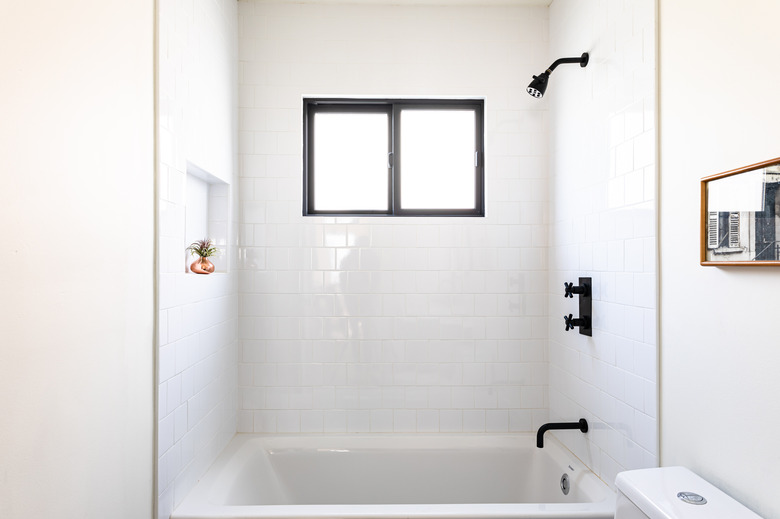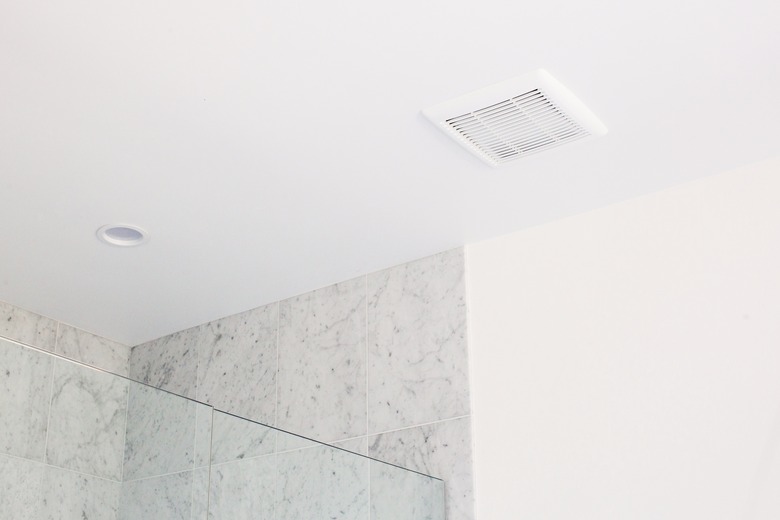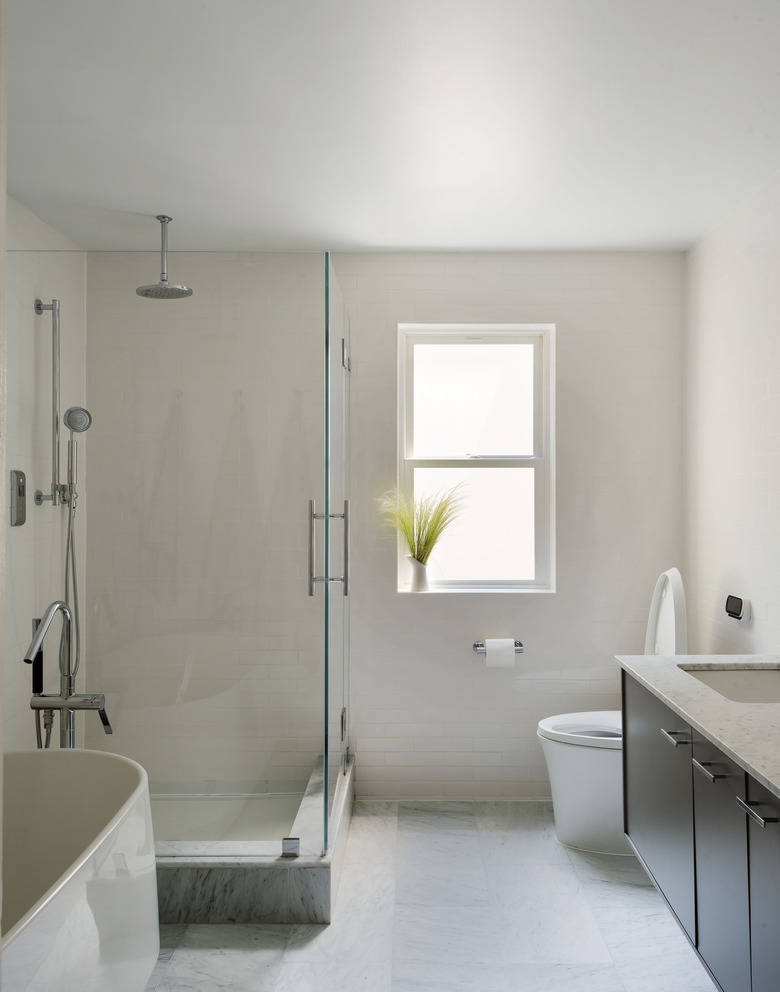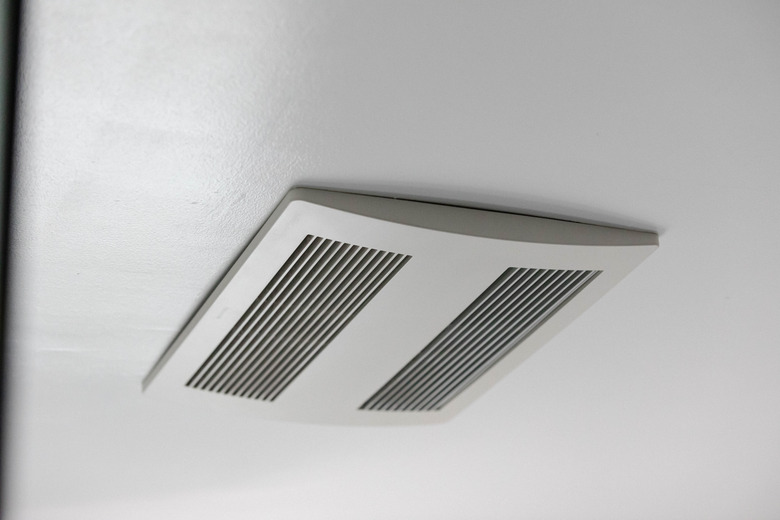Tips For Improving Bathroom Ventilation
Proper bathroom ventilation isn't just a matter of comfort — it's a code requirement. Every bathroom that doesn't have an openable window must have an exhaust fan, and in some places, the fan is required even if there is a window. Proper ventilation keeps air moving and controls moisture that allows mold and mildew to grow, peels wall paint, delaminates cabinets and rots framing. It also improves air quality and controls bathroom odors.
If your bathroom has a fan but you're still having moisture problems, there are two main strategies for improving bathroom ventilation. One is to upgrade the fan or improve the efficiency of the existing one, and the other is to increase the amount of replacement air in the bathroom. Of course, if the bathroom has no fan or window, you need to install one or the other, and a fan is preferable, primarily because the local code may require it but also because a fan is more practical in winter. You may need to hire an HVAC pro to do it.
Improve Bathroom Ventilation With a Larger Fan
If the fan in your bathroom doesn't seem to be doing its job, it may be undersized. Building regulations require a ventilation fan to be able to exchange all the air in the room at least five times per hour, and many contractors recommend eight air exchanges per hour. To achieve this, the capacity of a bathroom ventilation fan in cubic feet per minute (cfm) should be approximately equal to the floor area in square feet. In other words, you need one cfm of fan capacity per square foot of floor area.
Suppose the bathroom floor area is 100 square feet and your fan has a cfm rating of 50, which is the minimum available. The fan has to work overtime to exchange all the air in the bathroom, and it won't be able to do the job, especially if you don't leave it on long enough or if the bathroom has a Jacuzzi, which on its own needs a fan capacity of 100 cfm over and above the rest of the bathroom. You need to install a bigger fan, and the job might be easier than you think.
You can take the bathroom fan out of the housing by pulling off the grille, unplugging the fan and removing the plate to which it's attached, a procedure that is not much more difficult than unscrewing a light bulb. Look for a higher capacity, Energy-Star-rated fan on the same size mounting plate, install the new fan, plug it in, replace the grille and you're done. Unfortunately, the noise level of the larger fan (measured in sones) will probably be higher, but that's about the only drawback.
Service Your Existing Fan to Improve Bathroom Ventilation
Perhaps your existing fan already has enough capacity for your bathroom, but it isn't doing the job. If so, it might just need a little maintenance.
Start by removing the grille and cleaning it. Then, unplug the fan and pull it out of the housing. Removing the fan exposes the vent duct opening in the housing, and when you poke your finger into it, you should feel the damper, which is a revolving plate that opens when the fan is on and closes when it's off to prevent outside air from coming into the bathroom.
This plate should move freely, and if it doesn't, spray some lubricant on the axle and keep moving it back and forth until it does. When you're done, clean all gunk and dirt from inside the housing with a damp sponge or, as One Good Thing recommends, a microfiber cloth.
Turning your attention to the fan, use the microfiber cloth to get all the dirt off the fan blades or pull off the fan wheel and wash it in the sink. The Home Ventilating Institute reminds you to never get water inside the fan motor housing. Rotate the shaft to make sure it moves freely and lubricate it if necessary. If the noise level has been higher than usual and the fan appears rusty and worn, it's probably time for a new one.
Improving Bathroom Ventilation With Cross-Drafts
When all the bathroom ventilation comes from a window, it's important to keep the window open, but you may not want to do that in the middle of winter. In that case, you should install a fan, but until you do, keep the bathroom door open after each shower at least until the mirrors defog. It also helps to keep the door open or ajar even if you have a bathroom vent fan because that gives the fan more air to exchange and improves circulation. It's also important to allow at least a 1/2- to 3/4-inch gap between the bottom of the door and the floor for air to enter when the door is closed.
More Tips to Improve Bathroom Ventilation
Mold often grows in parts of a bathroom that are hidden and receive poor air circulation, such as directly behind the toilet or inside the sink vanity cabinet. You can often improve circulation to all parts of the bathroom with a table fan placed in the doorway to draw outside air into the bathroom. If mold grows in the vanity, check for leaks and repair any that you find and keep the doors open while the ceiling fan or table fan is on.
If you have a bath fan installed in the ceiling or wall, it's important to let it run for at least 15 minutes after every use of the tub or shower. Replace the fan switch with a timer switch so you won't have to remember to turn off the fan, which is easy to do if the bath fan is quiet enough to be barely noticeable in other parts of the house. You can also install a humidity sensor (or a fan with a built-in humidistat) that turns the fan off automatically when the humidity levels fall below a preset amount.
The venting ducts are an important part of the bathroom exhaust fan system, and they must allow air to flow efficiently. Ducts with too many bends impede airflow, and uninsulated ducts can get blocked by ice in the winter. Moreover, cold-climate venting systems often have a backdraft damper placed near the outlet to keep out cold air, and it can get locked by frozen condensation.
If you're having trouble with moisture and the fan seems to be working, check the exhaust vent outlet to make sure air is coming out. There should be enough airflow to make a piece of paper flutter. If there's no air, checking the ducts and making necessary modifications aimed at improving bathroom ventilation should be your next home improvement project.



